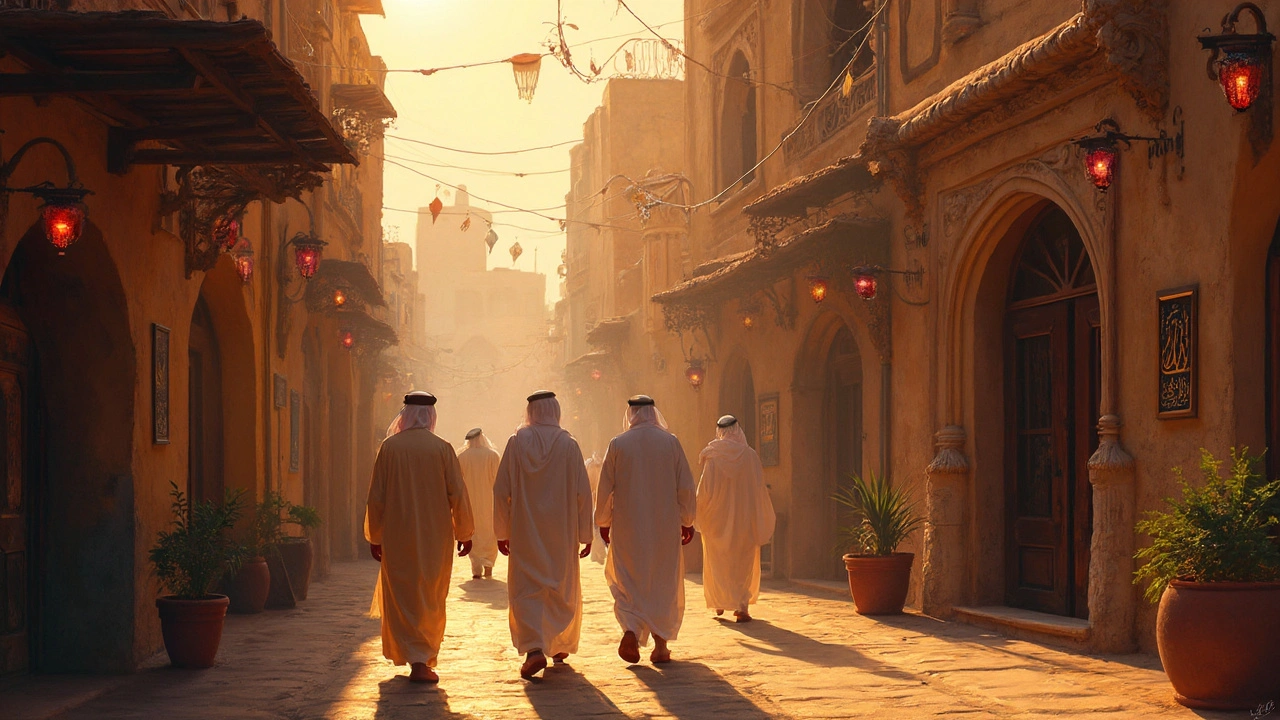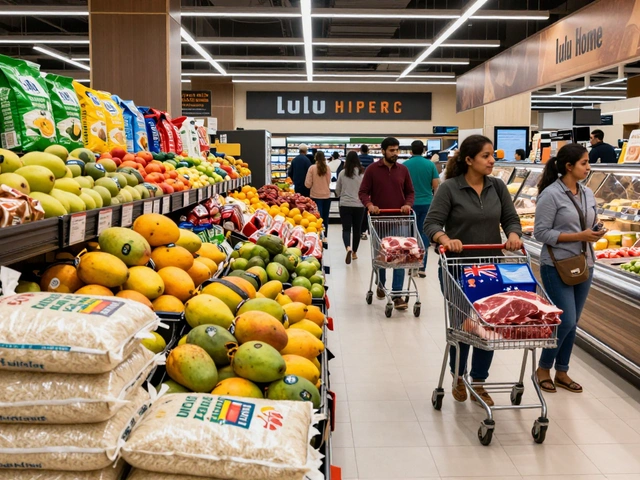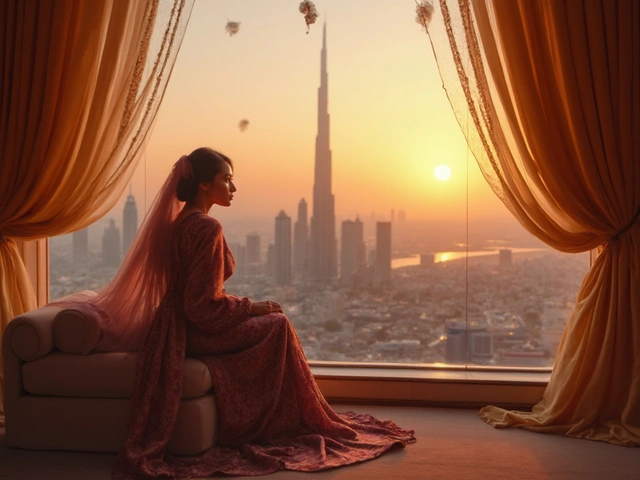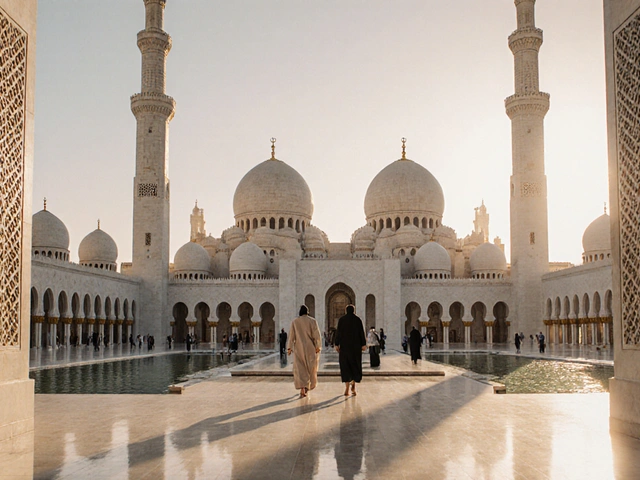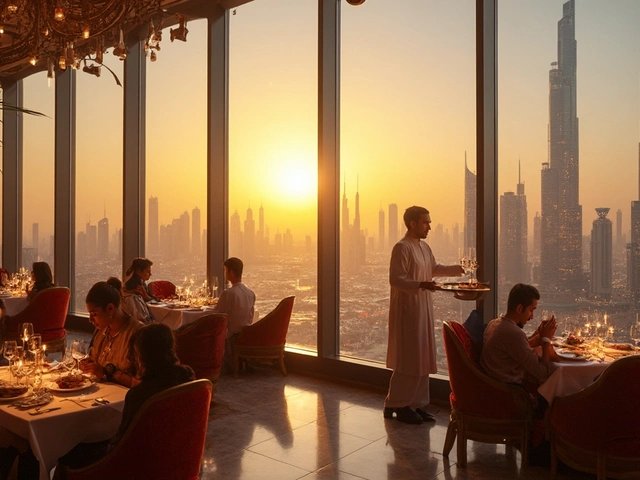Forget everything you think you know about Dubai for a second. Sure, the city is famous for its glittering towers, but if you skip the traditional attractions, you’re missing the heart and soul of the place. There’s something special about wandering through the Old Souk, where the scent of spices hits you before you even spot the piles of saffron and frankincense.
Looking for an experience that actually feels like Dubai? Put the latest mall on pause and dive into heritage spots like Al Fahidi Historic District. This isn’t just a bunch of old buildings—a walk here is like hopping in a time machine, with sand-colored wind towers, narrow lanes, and quirky museums around every corner.
If you’re wondering whether these attractions are too tourist-trappy, don’t stress. Locals love them, especially when visiting with family or showing friends around. Plus, visiting traditional spots means you get to chat with Dubai’s craftspeople, haggle in the markets, and try street eats you won’t find in the big hotels.
- Key Dubai Cultural Must-Sees
- What Makes Dubai's Heritage Unique?
- Benefits of Traditional Experiences
- Types of Traditional Attractions
- How to Explore Like a Local
- Quick Tips for First-Timers
Key Dubai Cultural Must-Sees
When people hear Dubai attractions, most think Burj Khalifa, but traditional Dubai is a whole other scene. Let’s break down the places where you’ll feel like you’ve landed in the real deal—not just another tourist hotspot.
- Al Fahidi Historical Neighborhood: This is the oldest part of town, packed with restored wind-tower houses and narrow alleys. You’ll find art galleries, courtyard cafés, and the Dubai Museum right here. Quick tip: go early to beat the midday heat and score good photos without the crowds.
- Dubai Creek: This waterway is where the city began. Hop on an abra (that’s a traditional wooden boat) to zip across from Bur Dubai to Deira for just one dirham. You’ll get killer views of old architecture, docks, and buzzing daily life.
- Gold and Spice Souks: Crossing into Deira, these markets are as colorful as they come. Gold here is displayed by the kilo, and bargaining is totally normal. The spice souk isn’t just for foodies—pick up za’atar, sumac, or saffron for way less than any supermarket.
- Sheikh Mohammed Centre for Cultural Understanding: If you really want the inside scoop on Emirati culture, book a meal here. You can ask anything you want about local customs and traditions—nothing’s off limits.
- Jumeirah Mosque: One of the few mosques in Dubai open to non-Muslims. Guided tours run almost daily, and they’re famous for honest Q&As about Emirati religion and day-to-day life. Dress modestly to join in.
- Al Seef District: Built along the creek, this area blends old-school Dubai with modern touches. Think boutique hotels and open-air cafés, but also cobbled lanes and fishing boats. Grab a karak chai (sweet tea) from a local stall and just soak in the vibe.
| Attraction | Best Time to Visit | Unique Feature |
|---|---|---|
| Al Fahidi | Morning | Historic wind towers, galleries |
| Dubai Creek | Sunset | 1-dirham abra rides |
| Gold & Spice Souks | Late Afternoon | Cheap spices, lively haggling |
| Jumeirah Mosque | Tour times (Mon-Thu, Sat) | Open to all for tours |
People sometimes skip these historic spots, thinking they’re only for tourists. But locals actually bring relatives here all the time. If you want authentic souvenirs or real conversations about daily life in Dubai, these are your go-to places. Don’t forget to bring some cash—many market stalls in the old districts don’t take cards.
What Makes Dubai's Heritage Unique?
Dubai’s story isn’t just about oil and skyscrapers. It’s rooted in old cultural experiences that you literally see and feel while walking its historic districts. For generations, Dubai was a small fishing and pearl-diving town on the banks of the Creek. Long before the big money rolled in, this place ran on trade, tradition, and tight-knit communities.
What really sets traditional Dubai attractions apart is how the city blends the old with the new, often in the same square mile. Step from a glittery shopping mall straight into a crowded gold souk or a mosque that’s over 150 years old. You’ll spot wind towers on century-old houses—these bad boys acted as Dubai’s first air conditioners. Head down Al Seef or Al Fahidi, and you’ll see how people really lived, with mud-brick homes and maze-like alleys built to beat the desert heat.
Want more specific proof? Here’s a breakdown that hits home:
- Heritage Villages: Check out Al Shindagha—an area packed with restored houses, a museum on Dubai’s pearl-diving past, and even a Qasr (old palace) turned visitor site.
- Trade as Culture: The Dubai Creek split the city into Deira and Bur Dubai, making the waterway a lifeline. Locals still use tiny wooden boats called abras to hop between markets—the ride costs just one dirham, and you get the best creek views in town.
- Multi-cultural Roots: With centuries of trade, Dubai mixed Arab, Persian, Indian, and East African customs. You’ll see it in local food, architecture, and even street names.
Here’s something that might surprise you. Nearly 15% of Dubai’s total land area is committed to heritage sites or protected districts. That’s a lot of real estate for a city that loves building upward. The government invests millions every year to keep these sites protected and open to all.
One last thing? Traditional Dubai is all about living history—open markets, historic mosques, and people actually working with their hands. If you want a taste of the real Dubai, heritage neighborhoods aren’t just old—they’re alive, busy, and totally unique to this city.
Benefits of Traditional Experiences
Why bother with Dubai’s old-school attractions when you could just chill in the air-conditioning of a mall? Here’s the thing: traditional Dubai attractions do way more than just tick a box on your tourist to-do list. They connect you to the city’s real heartbeat—the heritage, the people, the food, and the stories you’d never find in a brochure.
First up, you actually get to meet locals. Head to the spice souk or a family-run restaurant in Deira, and you’re right in the mix, chatting and haggling like folks have done here for ages. This isn’t some staged event; it’s everyday life in Dubai. These moments open your eyes to how much the city has changed, while still holding onto its roots.
Food is a big part of it. Try lugaimat (those sweet dough balls drizzled with date syrup) from a market stand instead of just room service. You’ll remember the taste way longer. Eating like a local also saves you cash compared to fancy hotel buffets, and honestly, street food in Dubai has been rated higher than plenty of sit-down restaurants.
Visiting places like Al Fahidi or the Dubai Museum means you see real architecture and artifacts. These aren’t polished replicas—they’re the actual thing. According to Dubai Culture, visitor numbers to these heritage sites jumped by over 20% in 2023. That’s a good sign that more people want the real deal, not just glossy photos.
If you’re interested in souvenirs, the traditional markets are where you score unique stuff—from handwoven carpets to gold jewelry (with prices you can actually haggle). This supports small businesses that have been around for generations, instead of just big retail chains.
- Meet people who actually live and work in Dubai
- Get hands-on with Emirati crafts, like calligraphy or pottery classes in Alserkal Avenue
- Try authentic snacks and drinks you won’t find back home
- Take in the old-school architecture and see how Dubai used to look before the boom
- Snap photos that actually feel personal—no filter needed
Traditional cultural experiences honestly make your trip more memorable. The skyscrapers are cool (no doubt), but it’s these old corners and conversations that stick with you. If you want to come home with stories no one else has, this is the way to do it.
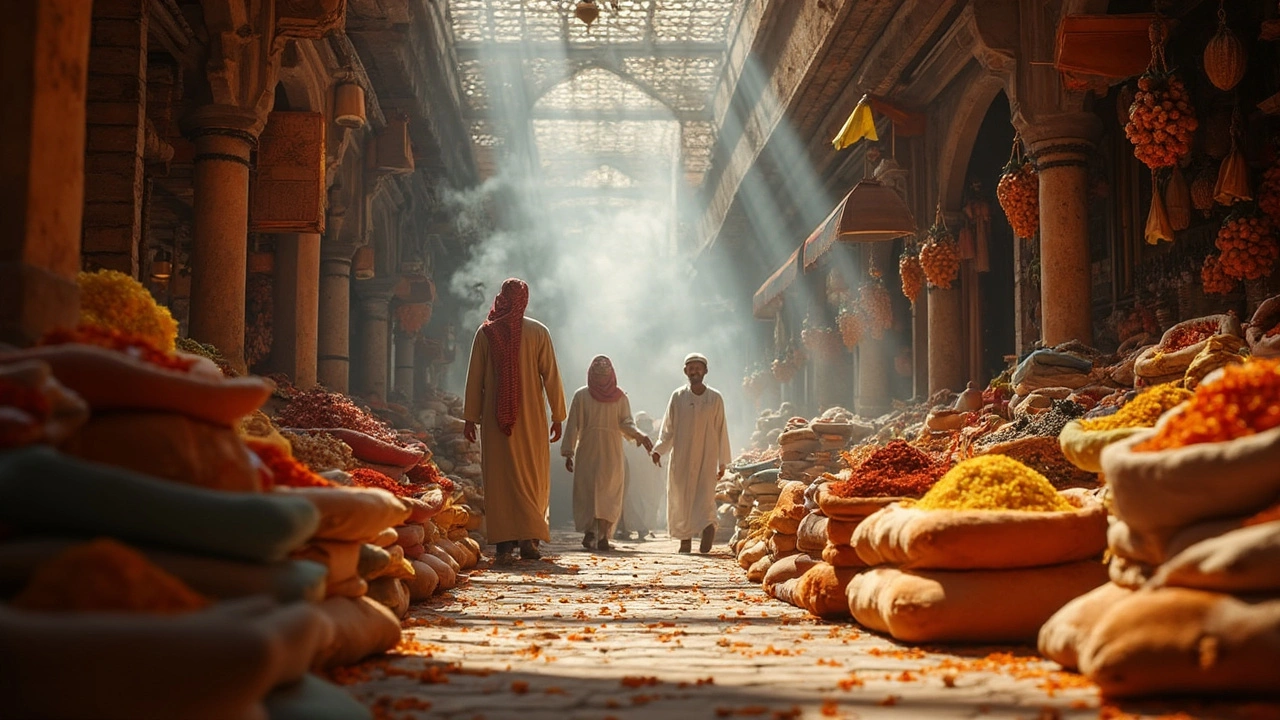
Types of Traditional Attractions
You’ll find that Dubai attractions aren’t all about high-end shopping or rooftop brunches. If you want a real taste of the city, check out these tried-and-true traditional spots. Each one shows off a different side of Dubai’s past and present. Here’s what’s worth your time:
- Historic Districts: Al Fahidi Historical Neighborhood is the big one here. Walk between wind towers and sand-colored homes from the early 1900s. The Dubai Museum (inside Al Fahidi Fort) is a favorite, and it’s great for families or anyone who wants a crash course in local history. Don’t miss the art galleries and coffee shops squeezed into side streets.
- Traditional Souks: Skip the usual souvenir stalls and head for the Gold Souk and Spice Souk in Deira. The Gold Souk is basically wall-to-wall shop windows with mind-blowing necklaces and bracelets. Over at the Spice Souk, you’ll get hit with the smell of cardamom, saffron, dried lemons, and rose petals. It’s one of those Dubai attractions that pulls you into real local life.
- Cultural Centers: Places like Sheikh Mohammed Centre for Cultural Understanding in Al Fahidi are super helpful if you want to get why Emirati traditions matter. You can book a meal, join a Q&A about local customs, or try your hand at Arabic calligraphy.
- Mosques You Can Visit: Jumeirah Mosque is famous since non-Muslims can join guided tours there. It’s a chance to ask the burning questions about the religion and admire the quiet beauty of the architecture—no judgment, just honest answers.
- Traditional Houses and Museums: Bait Al Banat Women’s Museum gives you the history of Emirati women’s lives. Coin Museum and Coffee Museum are tucked into old houses, each filled with quirky objects and stories from the city’s past. Great spots for when you want something more chill than big crowds.
- Cultural Events and Markets: Plan your trip around festivals like Dubai Shopping Festival (which actually has heritage events) or Sikka Art Fair. Plus, Friday markets often set up in old neighborhoods, selling woven baskets, textiles, and home-cooked snacks.
If you’re curious, here’s how these traditional Dubai attractions stack up when it comes to popularity and visitor experience:
| Attraction Type | Location | Peak Times | Best For |
|---|---|---|---|
| Al Fahidi District | Bur Dubai | Late Morning, Sunset | History Buffs, Art Lovers |
| Gold & Spice Souk | Deira | Afternoon | Bargain Hunters, Foodies |
| Jumeirah Mosque | Jumeirah | Morning Tours | Cultural Insight |
| Cultural Centers | Al Fahidi | Booked Sessions | Families, Curious Travelers |
Every spot is unique and easy to reach by metro, taxi, or even traditional abra boat across Dubai Creek. If you hit more than one in a day, bring water—it gets hot, especially midday, and you’ll do plenty of walking.
How to Explore Like a Local
You want the real deal, not just the postcard version—so here’s how you can soak up Dubai attractions just like someone who lives here. The secret? Focus on the details, make time for conversation, and go beyond the obvious.
First off, always start your day early. The souks and historic neighborhoods like Al Fahidi get busy mid-morning, but if you show up at 8 or 9 am, you’ll catch quiet moments, fewer crowds, and maybe a friendly chat with a shopkeeper opening up. Most locals avoid peak heat by exploring in the morning or after sundown, especially in summer.
Don’t just pass through the old markets—actually shop there. Head to Deira’s Spice Souk and Gold Souk, known all over for their energy and variety. Locals love bargaining, so don’t feel shy about negotiating prices. An easy rule: offer half the first price and see how it goes. And if you’re hungry, try a quick bite at one of the eateries tucked behind the stalls—falafel, shawarma, or sweet luqaimat are street food classics.
- Take a traditional abra (water taxi) across the Dubai Creek. It costs just 1 dirham, and the ride gives you the best views of old and new Dubai coming together.
- Pop into the Sheikh Mohammed Centre for Cultural Understanding for a Q&A session about Emirati culture. They’ve got open houses where you can enjoy a traditional breakfast while asking anything you want—even the awkward stuff!
- If you’ve got an eye for art, step into the galleries in Alserkal Avenue or the tucked-away spaces in Al Fahidi to get a feel for how Dubai’s combining its past with a creative future.
The Dubai Metro is a game-changer. Plenty of locals ditch the car and take the Red or Green Line to places like BurJuman or Al Ras Station. It’s quick, easy, and gives you a slice of daily life here. From the metro stop, every major heritage site is a short walk or a quick taxi ride away—no need to worry about parking or traffic jams.
Here’s a helpful comparison of typical tourist vs. local habits around traditional Dubai:
| Tourist Approach | Local Approach |
|---|---|
| Stay in the main souk areas only | Venture into side streets for unique finds |
| Accept prices as listed | Always negotiate, especially in souks |
| Rely on taxis for every trip | Mix metro, bus, and walking for short distances |
| Eat at global chains | Grab snacks from local bakeries and stalls |
No need to rush. Most locals take their time, whether they’re enjoying Arabic coffee at a majlis or just wandering around the textile market. Resist the urge to see everything in one day—just pick one or two spots, linger, and let the stories come to you. That’s where the magic happens, trust me.
Quick Tips for First-Timers
Alright, if you’re new to checking out Dubai attractions beyond the headline-grabbing stuff, there are a few things to know that’ll make your trip a whole lot smoother. This isn’t just about saving time—these tips will help you experience the real vibe of traditional Dubai.
- Dress for the weather (and the culture): It might be tempting to pull out shorts, but for places like the Al Fahidi District and old mosques, dress modestly—think knee-length skirts, pants, and covering shoulders. Bonus: Light layers work well, especially from October to April when it's less scorching.
- Pick your timing: Early mornings or late afternoons work best to avoid crowds, especially at the Gold Souk and Dubai Museum. Fridays are quieter in the morning since it’s a holy day, but places can get busy by the afternoon.
- Carry cash: Small markets and food stalls in the old quarters often don’t take cards. Dirhams go a long way, especially when bargaining for souvenirs or grabbing street snacks.
- Bargain with a smile: Haggling is part of the experience at Dubai’s traditional souks. Try offering about 60-70% of the original asking price—and don’t stress, it’s all friendly and expected!
- Metro makes it easy: Use the Metro or hop on an abra (traditional boat) to get around places like Deira or Bur Dubai. Taxis are everywhere, but taking public transport adds to the local feel.
- Check opening hours: Heritage sites often close by sunset, and some souks pause for long lunch breaks. The Dubai Museum, for example, usually shuts by 5:30 PM, so plan your stops with that in mind.
Need some numbers to plan your day? Here’s a quick snapshot:
| Attraction | Open Hours | Entry Fee (AED) |
|---|---|---|
| Dubai Museum | 8:30am – 5:30pm (Fri: 2:30pm – 5:30pm) | 3 |
| Al Fahidi District | 24/7 (Museums typically 9am – 5pm) | Free (some museums up to 20) |
| Gold Souk | 9:30am – 9:30pm (Some shops closed Fri morning) | Free |
Finally, don’t be afraid to chat with locals or shop keepers—they’re used to cultural experiences tourists and are often happy to give directions or share quick history tidbits. Keep your phone handy for translations or map apps, but just soaking it all in is often the best way to go.

